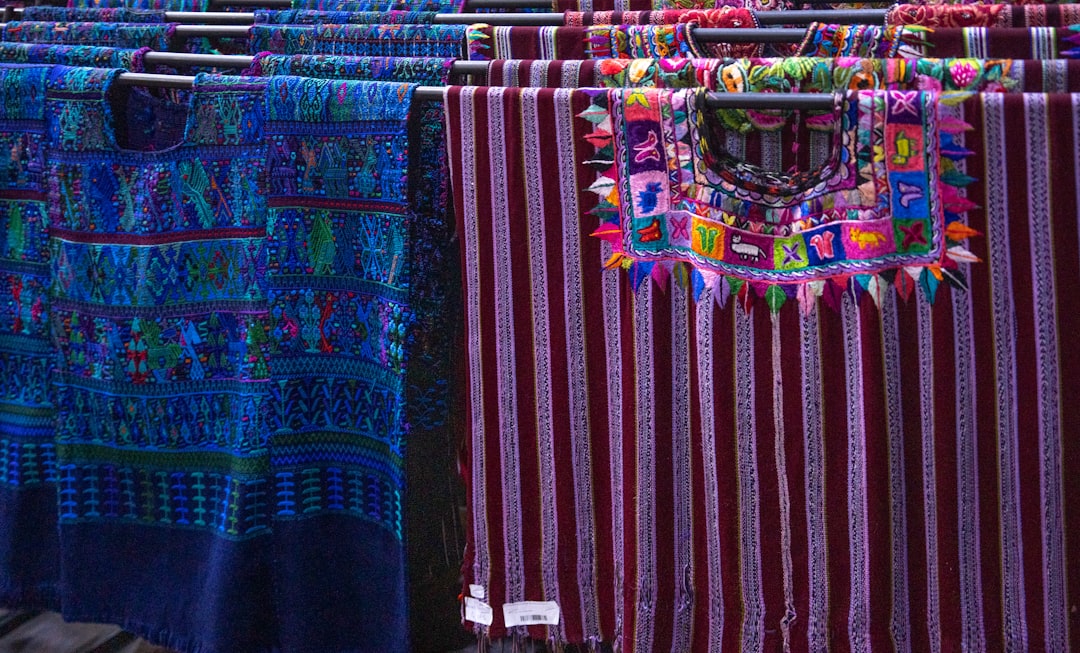

Engage prospects with a scan and streamline customer engagement with FREE QR code marketing tools by Sona – no strings attached!
Create a Free QR CodeFree consultation

No commitment

Engage prospects with a scan and streamline customer engagement with FREE QR code marketing tools by Sona – no strings attached!
Create a Free QR CodeFree consultation

No commitment
In today’s digitally driven marketplace, wholesale children's clothing suppliers face intense competition and evolving buyer expectations. Modern buyers increasingly search for reliable children's clothing wholesale directories, compare discount children's clothing suppliers, and evaluate up-and-coming wholesale brands. Suppliers often struggle with challenges such as missing high-value prospects when manual processes fail to capture every interested buyer, and lost opportunities when key decision-makers visit your booth or browse catalogs but remain untracked in your CRM. These missed connections often result in valuable leads going cold before your sales team can respond, allowing competitors to win business.
QR codes in marketing are emerging as a strategic solution for bridging offline engagement with online action in the wholesale children's clothing sector. They provide a frictionless, app-free way for bulk buyers, retail partners, and trade show visitors to connect instantly to product details, inquiry forms, or exclusive offers, turning every print touchpoint or physical asset into a dynamic lead generation channel. For suppliers with limited visibility into booth traffic or catalog readers, QR codes help surface real engagement that traditional forms or passive displays might miss.
By reimagining how QR codes are integrated into catalogs, event booths, and packaging, suppliers can unlock measurable improvements in lead quality, inventory management, and buyer insights. Integrating QR-based tracking and CRM enrichment not only streamlines lead capture but also helps build stronger, data-driven relationships across the supply chain, enabling real-time insight into buyer readiness, repeat engagement, and shifting inventory demand. This article explores actionable strategies for deploying QR codes purposefully, addressing common challenges, and building a seamless journey from initial interest to loyal partnership in the wholesale children's clothing market.

QR codes bridge the gap between physical materials and digital outcomes, enabling suppliers to boost lead capture, optimize inventory management, and drive sales velocity, all while reducing the risk of missing high-value prospects who engage with your brand but are not registered by traditional forms or CRM workflows. When designed with clear intent and paired with the right destinations, they convert catalog flips, booth visits, and packaging interactions into qualified inquiries and measurable pipeline.
Replacing legacy processes is central to this improvement. Instead of paper sign-up sheets at trade shows, static price sheets that go out of date, or manual product inquiry forms that get lost in transit, QR codes route buyers to dynamic pages and pre-filled forms that sync directly to your CRM. This not only reduces friction for buyers but also equips sales teams with cleaner data, richer context, and faster notifications so follow-up happens while interest is still high.
Here’s how to do it effectively:
As print forms and manual sign-ups decline in efficiency, QR-driven strategies deliver faster lead qualification, automate list segmentation, and keep your team focused on serious buyers by surfacing intent signals missed by legacy methods. Sona QR is built to support every step of this transformation, from code creation and design to analytics and CRM integrations.

Wholesale children's clothing suppliers contend with rapid seasonal changes, unpredictable demand, and high expectations for speed and personalization. A major challenge is the lack of visibility into who is engaging with your print materials or trade show presentations, leading to missed opportunities, incomplete account data, and lost sales. QR codes address these problems by linking every print asset to digital engagement and real-time insight that your sales team can act on quickly.
The benefits are both tactical and strategic. On the tactical side, QR codes let buyers skip queues and paperwork by scanning to request a line sheet, book a follow-up appointment, or check compliance documents like CPSIA or OEKO-TEX certifications. On the strategic side, QR scan data shows which styles, sizes, or price points are generating traction, which events create the most demand, and which markets are ripest for expansion. This continuous feedback loop allows you to adjust inventory, promotions, and outreach without waiting for end-of-quarter results.
Key benefits include:
Suppliers who adopt QR codes minimize the risk of unqualified or stale leads clogging the funnel. The result is a more responsive, data-driven approach that encourages loyalty in a competitive wholesale environment and helps teams stay ahead of seasonal demand shifts.

Children’s clothing wholesalers face challenges like shifting inventory, strict compliance requirements, and diverse buyer segments ranging from boutique retailers to national chains. QR codes offer flexible formats that match these realities, each suited to different moments in the buyer journey and operational workflows.
Selecting the right format depends on the action you want to trigger. For top-of-funnel discovery, web links to digital lookbooks capture interest efficiently. For mid-funnel intent, forms or SMS make it easy for buyers to ask pricing or request samples. For post-purchase service, QR codes that open email or chat channels help manage reorders and support. Dynamic codes are especially useful in this sector because they let you update destinations as styles sell out or compliance documents change.
Dynamic QR codes ensure accuracy as product specs, availability, or certifications evolve, which protects trust and avoids disappointing buyers with outdated information. Static codes have a role too, such as linking to evergreen content like a brand story or sustainability page.

Growth plateaus often signal missed leads and weak post-event nurturing. To unlock new opportunities, identify the moments and materials where buyer engagement slips through the cracks and add QR codes that convert attention into action. Focus on the physical surfaces that already travel with your products or command attention in the field.
Start with existing collateral before investing in new design. For instance, your printed catalog likely has high dwell time but no direct path to action. Your polybags and shipping labels are seen by multiple stakeholders at retailers or distribution centers, yet they are rarely used to drive engagement. Your trade show displays draw foot traffic, but overwhelmed staff can only talk to a fraction of interested buyers.
For international importers, QR codes on export documentation or sample parcels let overseas buyers confirm status or request meetings instantly, reducing attrition caused by time zone gaps. If you source or sell through China, the Yiwu market overview is helpful for planning merchandise and demand cycles. Domestically, QR-enabled catalogs distinguish between passive and highly engaged prospects, enabling targeted follow-up that maximizes close rates and capture of in-season demand.

QR codes shine when tied to specific business goals. In wholesale children's clothing, the most effective implementations both improve buyer experience and generate clear, measurable gains in pipeline and revenue. The following use cases map to common touchpoints and remove friction that often derails interest.
These examples demonstrate how technology surfaces engagement that would otherwise remain hidden. Each scan becomes a data point that informs which products to feature, which accounts are ready for quotes, and where you should invest marketing budget next.
Suppliers often miss retargeting opportunities when buyer engagement is not tracked or segmented. QR scans change this, capturing context and intent that you can use to build precise audiences for follow-up campaigns. When you deploy multiple codes across your materials, you create a network of entry points that feed distinct, behavior-driven segments. For execution ideas, see Sona’s playbook on retargeting.
Begin by mapping your funnel to physical assets. Awareness may start at a trade show display or a directory listing. Consideration often happens with a catalog spread, a sample box, or a pricing sheet. Conversion typically occurs after an inventory check or a consultation. Use unique QR codes at each stage so you can segment accordingly and trigger relevant messages.
With Sona QR, each scan can dynamically enrich contact records and trigger workflows, so retargeting is powered by real behavior rather than guesswork. Over time, these signals improve lead scoring and shorten the path from first scan to wholesale order.
Children’s clothing suppliers often struggle to unify engagement across offline and digital channels. QR codes provide the connective tissue that brings every touchpoint into a centralized system, allowing you to engage buyers in real time and capture data wherever they interact with your brand. By standardizing QR usage across channels, you create a cohesive buyer journey and gain a single view of performance.
Consistent execution matters. Use a shared visual standard for QR codes and calls to action so buyers recognize what scanning delivers. Centralize your code management and analytics to compare placements, campaigns, and product lines. With this foundation in place, QR codes amplify your existing channels rather than operate as one-off tactics.
QR codes serve as the offline onramp to your digital marketing engine. With a centralized platform like Sona QR, you can manage all your codes, monitor performance, and sync scan data with your CRM and ad platforms, which creates a closed-loop system for continuous improvement.
Effective QR campaigns balance clear strategy with practical details. Before you print a single code, align your objectives with the buyer journey and choose placements that meet buyers where they are. Then design for scannability and trust, and set up analytics so you can learn quickly and iterate.
The steps below provide a repeatable framework for wholesale children's clothing suppliers. Use them to launch your first campaign or to standardize how marketing, sales, and operations teams roll out QR codes across the business.
Start with a specific goal that ties directly to business outcomes. Examples include increasing qualified leads at a trade show, accelerating sample requests for a new organic line, or driving catalog readers to check live stock before placing a wholesale order. Once the goal is set, pick the physical assets that reach that audience most efficiently.
Choose a code type that fits your flexibility and tracking needs. Static codes are fine for evergreen content like brand stories. Dynamic codes are better for trackable, editable destinations that may change as inventory updates or compliance documents refresh.
Good design improves scan rates. Keep the code scannable at typical viewing distances and lighting conditions. Pair it with a clear value proposition and a simple call to action that explains the benefit of scanning.
Roll out your codes in the places where buyers already engage. Prioritize event booths, catalogs, hangtags, and shipping documents before secondary placements like ads or window clings. Align each placement with a relevant destination so the action after the scan feels natural.
Set up analytics before launch so you can see performance in real time. Test variations of CTAs, code sizes, and destinations to identify what works. Feed learnings back into design and placement to improve conversion and ROI over time.
A major pain point for suppliers is proving clear ROI from lead generation and connecting engagement to revenue. QR campaign analytics provide the transparency needed to measure performance across channels and attribute results to specific assets or activities. When scans feed clean data into your CRM, your team can respond faster, personalize outreach, and report on outcomes accurately.
Knowing that someone scanned a code is helpful, but it is only the start. To optimize spend and sales processes, you need to see how scans move buyers forward, from a lookbook view to a sample request, then to a meeting, and finally to a wholesale order. Traditional methods often stop at lead counts. QR analytics reveal which codes, pages, and placements accelerate the buyer journey and which create drop-offs.
With Sona QR and Sona, suppliers can go beyond basic scan counts. Sona QR tracks scans and syncs activity to CRM systems like HubSpot and Salesforce. Sona layers identity resolution and multi-touch attribution on top, connecting anonymous scans to known buyers and showing how QR engagement contributes to pipeline and revenue. Learn more about Sona’s identity resolution and offline attribution to build a connected analytics foundation.
Sustained QR success begins with attention to detail and a mindset of continual improvement. Many suppliers see strong early results, then plateau because their deployments are not differentiated by channel or because follow-up is not automated. The right operational practices maintain momentum and increase conversion over time.
Focus on the levers that influence behavior: clarity of value, ease of action, and speed of response. A polished QR design may draw the scan, but the destination experience and follow-up cadence determine whether that scan turns into a qualified lead and an order.
Creative deployment ideas include loyalty QR codes for bulk buyers that unlock tiered discounts, and export-box codes that invite overseas partners to schedule a virtual line review. Directory listings that include scannable certifications can also accelerate trust with new retailers and marketplaces.
Industry leaders transform pitfalls into opportunities by using QR codes strategically. The most impactful examples show a tight connection between the physical context and the digital action, along with analytics that inform the next move. Whether at events, in transit, or in-store, the common thread is clarity of purpose and operational follow-through.
Consider how these scenarios could map to your next campaign. Each example highlights a specific placement, a clear call to action, and a measured outcome that ties scans to business results.
Some suppliers include referral QR codes in retailer welcome kits, encouraging partners to scan and refer their own networks. Each referral scan is tagged to the original retailer, which creates organic list growth and rewards programs that reinforce advocacy.
The difference between a high-performing QR program and a mediocre one often comes down to execution details. From design to placement to follow-through, small choices can dramatically influence scan rates and conversion outcomes. Avoid common mistakes and repeat what works.
Staff buy-in matters as much as the codes themselves. Teams should understand the goals of each QR placement and be equipped to promote them during conversations, emails, and order confirmations. Consistency in message and experience builds trust and boosts adoption.
QR codes are more than a shortcut. They represent a foundational shift in how wholesale children's clothing suppliers connect offline interest to online action. From event engagement and inventory management to real-time lead capture and compliance transparency, each scan is an opportunity for measurable business growth. By addressing the pain points of missed leads, late follow-ups, and incomplete buyer data, QR-driven strategies give suppliers the edge needed to adapt, meet demand, and stand out in the children’s clothing wholesale market.
With well-implemented QR workflows, wholesale children's clothing suppliers can finally close the gap between physical and digital engagement, ensuring every high-value prospect is tracked and qualified. This integrated approach streamlines the buyer journey, empowers teams with deeper customer insights, and provides new opportunities for targeted growth. With Sona QR, you have everything you need to capture demand at the source, attribute it accurately, and convert it into measurable results. Start creating QR codes for free.
QR codes have transformed wholesale children’s clothing suppliers from traditional sales channels into dynamic, data-driven lead generation engines. Whether it’s capturing new retailer contacts, enhancing buyer experiences with instant access to catalogs, or streamlining order processes, QR codes replace cumbersome manual efforts with seamless, mobile-friendly interactions that deliver measurable results. Imagine instantly knowing which marketing materials spark the most interest and converting those leads into loyal customers with precision.
With Sona QR, you can effortlessly create dynamic, trackable QR codes that update on the fly—no reprinting needed—and connect every scan directly to your sales pipeline. This means better lead capture, smarter follow-ups, and a clearer picture of how your campaigns drive revenue. Start for free with Sona QR today and turn every scan into a valuable connection and a step closer to closing your next wholesale deal.
Top-rated wholesale children's clothing suppliers can be found through reliable wholesale directories and emerging wholesale brands platforms that list trusted suppliers and offer discount options.
Ensure quality by verifying suppliers' compliance with certifications such as CPSIA, OEKO-TEX, or GOTS and by accessing live compliance documents through QR codes on product tags or packaging.
Best practices include leveraging QR codes for real-time inventory and pricing checks, requesting samples via digital forms, tracking buyer engagement, and sourcing from suppliers who provide dynamic and up-to-date product information.
You can find reliable dropshipping suppliers by using wholesale directories, evaluating suppliers with dynamic QR code engagement tools, and verifying their compliance and responsiveness through digital lead capture methods.
Latest trends include organic and sustainable lines, seasonal fashion drops, and personalized or category-specific collections that can be tracked and promoted using QR code engagement data.
Negotiate prices by using buyer engagement data collected from QR code scans to demonstrate interest levels, request bulk discounts through digital inquiry forms, and maintain clear communication via pre-composed SMS or email linked through QR codes.
Common pitfalls include missing leads due to manual processes, relying on outdated print materials, neglecting compliance documentation, and failing to track buyer intent and engagement effectively.
Track engagement by using dynamic QR codes with unique URLs and UTM parameters, monitoring scan-to-inquiry conversion rates, lead-to-quote ratios, and syncing scan data with CRM systems for real-time analytics.
Legal requirements often include CPSIA, OEKO-TEX, and GOTS certifications, which suppliers should provide access to via QR codes on product hangtags or packaging to ensure compliance and build buyer trust.
Differentiate by integrating QR code technology to provide dynamic product information, streamline buyer engagement, offer personalized outreach based on scan data, and ensure fast follow-up with qualified leads.
Use Sona QR's trackable codes to improve customer acquisition and engagement today.
Create Your FREE Trackable QR Code in SecondsJoin results-focused teams combining Sona Platform automation with advanced Google Ads strategies to scale lead generation

Connect your existing CRM

Free Account Enrichment

No setup fees
No commitment required

Free consultation

Get a custom Google Ads roadmap for your business






Launch campaigns that generate qualified leads in 30 days or less.
